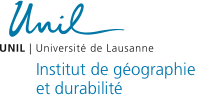Institute of Geography and Sustainability of the University of Lausanne
Research projects
Humans locked in, animals at large: urban animality reconsidered and mediatised in times of Covid-19 pandemic
The aim of this research project is to study the attention paid to urban animality during the lock-downs put in place to prevent and slow down the Covid-19 pandemic.
The project stems from the fact that the different lock-downs brought urban animality to the forefront of various media scenes. This is contrary to the general representation of the city which considers the urban to the antithesis of nature and of nonhuman life; previous studies have indeed shown that urbanisation is often represented as a process in which the 'natural' environment is replaced by a built environment (Heynen, Kaika, and Swyngedouw 2006). The city has been the subject of negative representations and has sometimes even been compared to a 'parasite' or a 'monster' (Gandy 2006). This negative imaginary of the city and of urbanisation has political ramifications and influences (urban) planning (Salomon Cavin 2005; Salomon Cavin and Marchand 2010; Salomon Cavin and Mathieu 2014).
The project seeks to participate to discussions brought up by an emerging literature on the forms of care that can characterise human-animal relationships (e.g. Gibbs, 2020), and more generally by the literature on human-animal relations and the spatial inscription of these relations.
More specifically, the project aims to:
(1) Reconstruct the temporal trajectory of the interest in non-domesticated animal species in urban areas. The aim is also to understand whether the lock-downs have played a role in the evolution of this trajectory, and if so, to specify this role.
(2) To identify the different forms of attention paid to these animal species, the different types of human-animal relations before, during and after the lock-downs.
To this end, a methodological protocol is being developed to study the attention paid to animated nonhumans. This protocol mobilises different sources, both 'traditional' media and social networks, both textual and graphic representations of urban animality.

